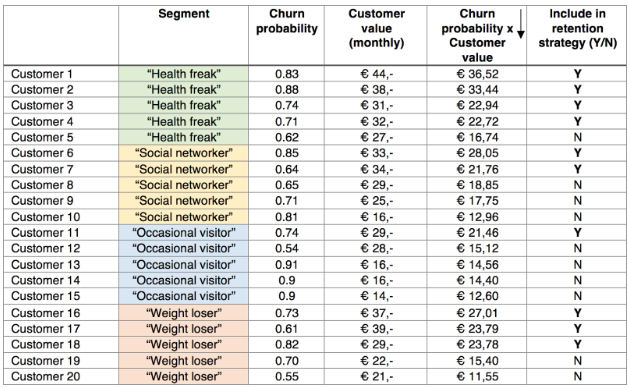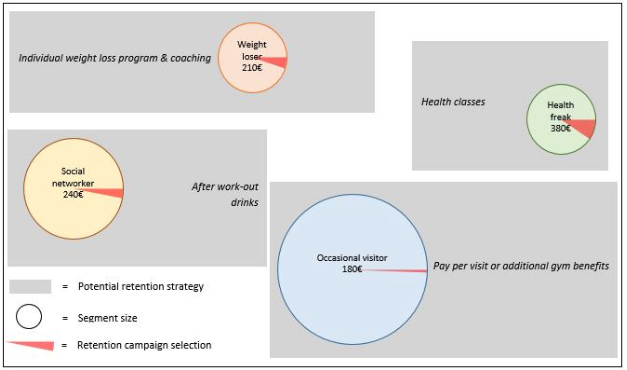Share this
How to Create the Best Customer Retention Strategy
by Crystalloids Team on Jan 30, 2025 4:00:11 PM
%20-%202025-01-30T155908.956.png?width=1120&height=630&name=Blog%20Format%20(1120%20%C3%97%20630px)%20-%202025-01-30T155908.956.png)
Keeping customers engaged and coming back is every marketer’s challenge—and opportunity. A strong customer retention strategy is essential for long-term growth in marketing. By prioritizing existing customers while also attracting new ones, marketers can boost profitability and build lasting relationships. In this article, we’ll explore practical, data-driven strategies to help you achieve these objectives.
Why is Customer Retention Important?
Retaining customers is significantly more cost-effective than acquiring new ones. Studies reveal that retaining an existing customer is five times less expensive than acquiring a new one. Moreover, existing customers are 50% more likely to try new products and spend 31% more compared to new customers. These statistics highlight why a robust strategy is essential.
Beyond cost-effectiveness, retaining customers contributes to building long-term brand loyalty. Customers who feel valued and appreciated are more likely to become advocates for your business, further enhancing your reputation and attracting additional new customers. This ripple effect demonstrates why customer retention is not just about reducing churn but fostering sustainable growth.
Segmenting Your Customers
Every successful customer retention plan starts with a deep understanding of your audience. By segmenting your customers, you can identify groups with shared behaviours and needs, enabling personalized strategies that improve the customer experience and foster customer loyalty.
The main purpose of segmentation is to summarise a lot of information about customer groups that share similarities, which can be used for tailored strategies.
There are many ways to segment your customers. Here is an example of fictional gym profiles:

Segmentation is a powerful tool for prioritizing high-value customers and addressing their unique needs.
The most important criteria for segments are:
- they should make sense
- they should be relevant to the business
- they should be targetable and statistically different from each other.
You can leverage customer data from internal systems or external market research. For example, segments can be based on purchase history, demographics, or engagement levels. This tailored approach enhances the customer experience and helps businesses retain customers more effectively.
When done correctly, segmentation leads to more effective marketing campaigns, optimized resource allocation, and higher customer satisfaction.
Here is an example of a customer segmentation model using a clustering algorithm.
Build a Churn Model
After segmenting your customers, the next step is to develop a churn model to identify customers at risk of leaving. A well-designed churn model helps distinguish between high- and low-churn probability customers, enabling smarter allocation of limited retention resources. By leveraging customer surveys and analyzing behavioural data, you can gain deeper insights into what your customers want and proactively address potential churn risks.
Steps to Develop a Churn Prediction Model
-
Data Collection: Gather comprehensive customer data from multiple sources.
-
Data Integration: Combine datasets into a unified, analyzable format.
-
Data Preparation: Clean and standardize your data by handling outliers and irrelevant variables.
-
Feature Selection: Focus on impactful variables by removing those with low variance or high correlation.
-
Model Training: Train predictive models using split datasets for accuracy.
-
Model Deployment: Implement the most effective model to assess churn risks across your customer base.
By identifying churn risks, you can take targeted actions that improve customer loyalty and retain at-risk customers. A well-developed churn model also enables businesses to forecast potential revenue loss and take proactive steps to mitigate it.
Retention Strategy per segment
After building the customer base and the churn model, it is time to combine the results of both analyses with the customer value to identify customers who should be included in a retention campaign. Tailoring your strategies based on client data fosters customer satisfaction and enhances their overall customer experience.
Example of a Tailored Retention Approach
Here is an example of the calculation where the cutoff point is ≥ 20.00 €. This cutoff point is arbitrary and might be increased or decreased depending on a retention campaign's expected costs and revenue.
In the overview below, all of the findings from the previous sections are combined: segment sizes, segment values, the proportion of customers to be contacted for a retention campaign, and potential recommended retention campaigns for each segment.

The retention strategy should mainly focus on customers with high churn probability and high value for the company in each segment. The number of customers to be included in the retention campaign might vary for each segment.

For segments with high churn risk, focus on personalized offers, such as exclusive discounts, enhanced customer support, or loyalty rewards. These efforts not only improve customer satisfaction but also foster a sense of loyalty. Meanwhile, periodic engagement can nurture low-risk segments to keep them connected and invested.
For instance, a SaaS company might offer a personalized onboarding experience for new users or create specialized training for high-value customers. These targeted actions can strengthen customer relationships and increase customer lifetime value.
Improve Customer Experience
A seamless and positive customer experience is pivotal to retaining customers. According to research, 65% of customers prefer buying from companies that offer quick and easy online transactions.
Furthermore, consistency across all touchpoints—online, in-store, or via customer support—is essential. Customers expect the same level of service regardless of how they interact with your brand. Businesses that deliver consistent and reliable experiences build trust, which is critical for long-term retention.
Leverage Loyalty Programs
A well-designed loyalty program boosts repeat business and strengthens customer relationships. Reward points, exclusive deals, and personalized incentives make customers feel valued and more likely to stay. While out-of-the-box solutions offer quick setup, programs can also be tailor-built to fit your business needs better.
For example, Rituals uses a custom, headless solution that integrates multiple data sources and uses AI-driven insights. Because it’s headless, the program runs independently of other systems, allowing Rituals to update or change its backend without disrupting the loyalty program.
Benefits of Loyalty Programs
-
Increased Retention Rates: Rewarding loyal customers makes them more likely to continue their relationship with your brand.
-
Enhanced Engagement: Engaging programs keep your customers involved with your business.
-
Referral Opportunities: Satisfied customers are more likely to recommend your business to others, contributing to customer acquisition.
Loyal customers often become advocates, bringing in referrals and enhancing your business reputation. Offering experiential rewards, such as exclusive events or VIP access, can further solidify their loyalty.
Measure and Analyze Customer Retention Metrics
Regularly monitoring customer retention metrics is essential to understand the effectiveness of your strategies. Key metrics include:
-
Customer retention rate: The percentage of customers who remain loyal over a specific period.
-
Customer churn rate: The percentage of customers lost during a given timeframe.
-
Customer lifetime value (CLV): The total revenue a customer is expected to generate throughout their relationship with your business.
-
Net Promoter Score (NPS): A measure of satisfaction and likelihood to recommend your brand.
Analyzing these metrics provides insights into areas needing improvement and helps refine your strategies. For example, a declining NPS may indicate gaps in the customer experience that need to be addressed.
Conclusion
A successful customer retention campaign starts with a deep understanding of customer behaviour.
Invest in strategies that attract new customers and strengthen your relationships with existing customers. Implementing loyalty programs, enhancing customer experiences, and leveraging data insights will help your business keep customers satisfied and returning for more.
Share this
- February 2025 (2)
- January 2025 (3)
- December 2024 (1)
- November 2024 (5)
- October 2024 (2)
- September 2024 (1)
- August 2024 (1)
- July 2024 (4)
- June 2024 (2)
- May 2024 (1)
- April 2024 (4)
- March 2024 (2)
- February 2024 (2)
- January 2024 (4)
- December 2023 (1)
- November 2023 (4)
- October 2023 (4)
- September 2023 (4)
- June 2023 (2)
- May 2023 (2)
- April 2023 (1)
- March 2023 (1)
- January 2023 (4)
- December 2022 (3)
- November 2022 (5)
- October 2022 (3)
- July 2022 (1)
- May 2022 (2)
- April 2022 (2)
- March 2022 (5)
- February 2022 (3)
- January 2022 (5)
- December 2021 (5)
- November 2021 (4)
- October 2021 (2)
- September 2021 (2)
- August 2021 (3)
- July 2021 (4)
- May 2021 (2)
- April 2021 (2)
- February 2021 (2)
- January 2021 (1)
- December 2020 (1)
- October 2020 (2)
- September 2020 (1)
- August 2020 (2)
- July 2020 (2)
- June 2020 (1)
- March 2020 (2)
- February 2020 (1)
- January 2020 (1)
- December 2019 (1)
- November 2019 (3)
- October 2019 (2)
- September 2019 (3)
- August 2019 (2)
- July 2019 (3)
- June 2019 (5)
- May 2019 (2)
- April 2019 (4)
- March 2019 (2)
- February 2019 (2)
- January 2019 (4)
- December 2018 (2)
- November 2018 (1)
- October 2018 (1)
- September 2018 (2)
- August 2018 (3)
- July 2018 (3)
- May 2018 (2)
- April 2018 (4)
- March 2018 (5)
- February 2018 (2)
- January 2018 (3)
- November 2017 (2)
- October 2017 (2)


